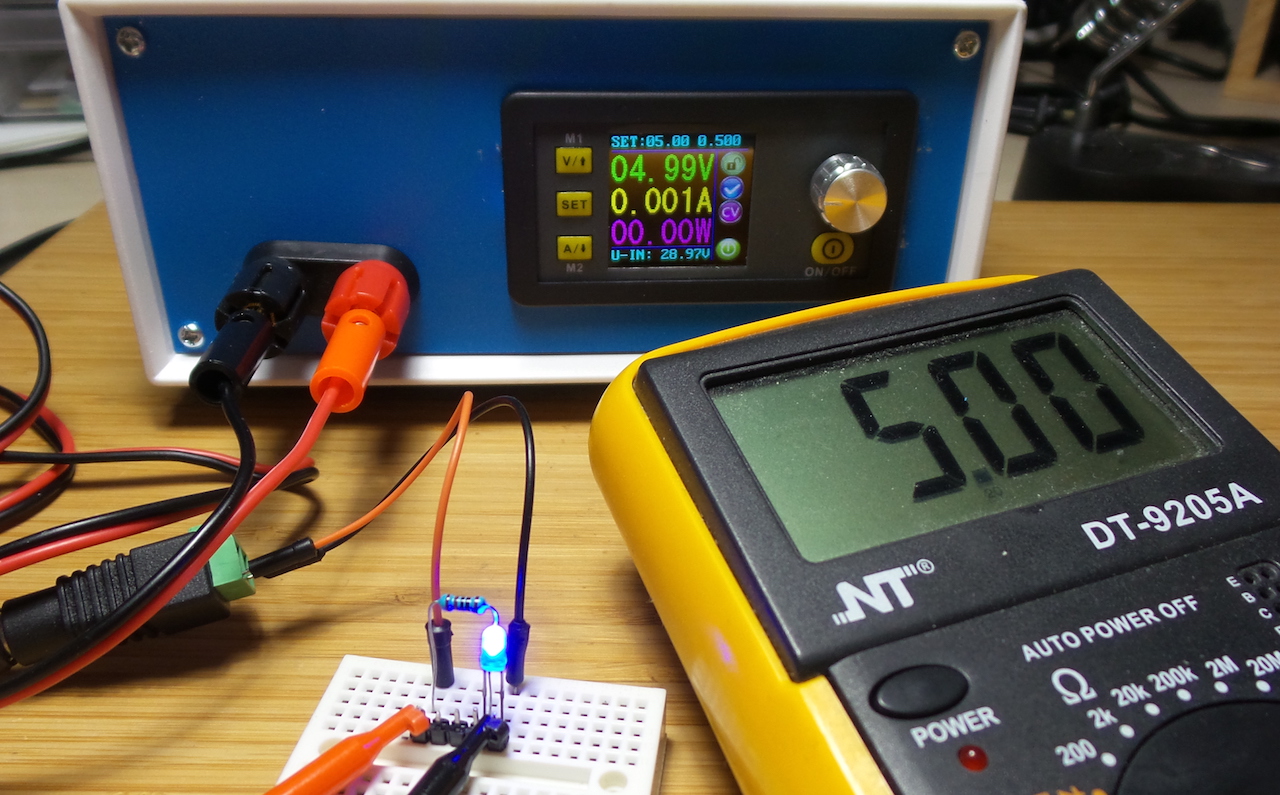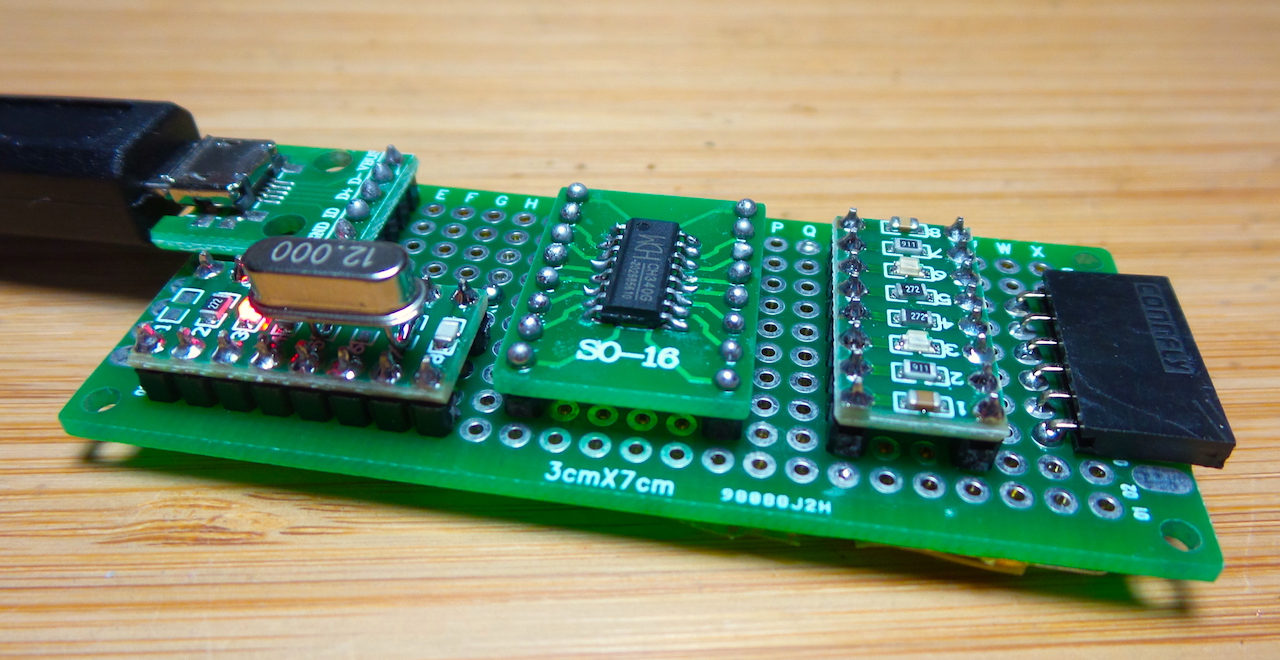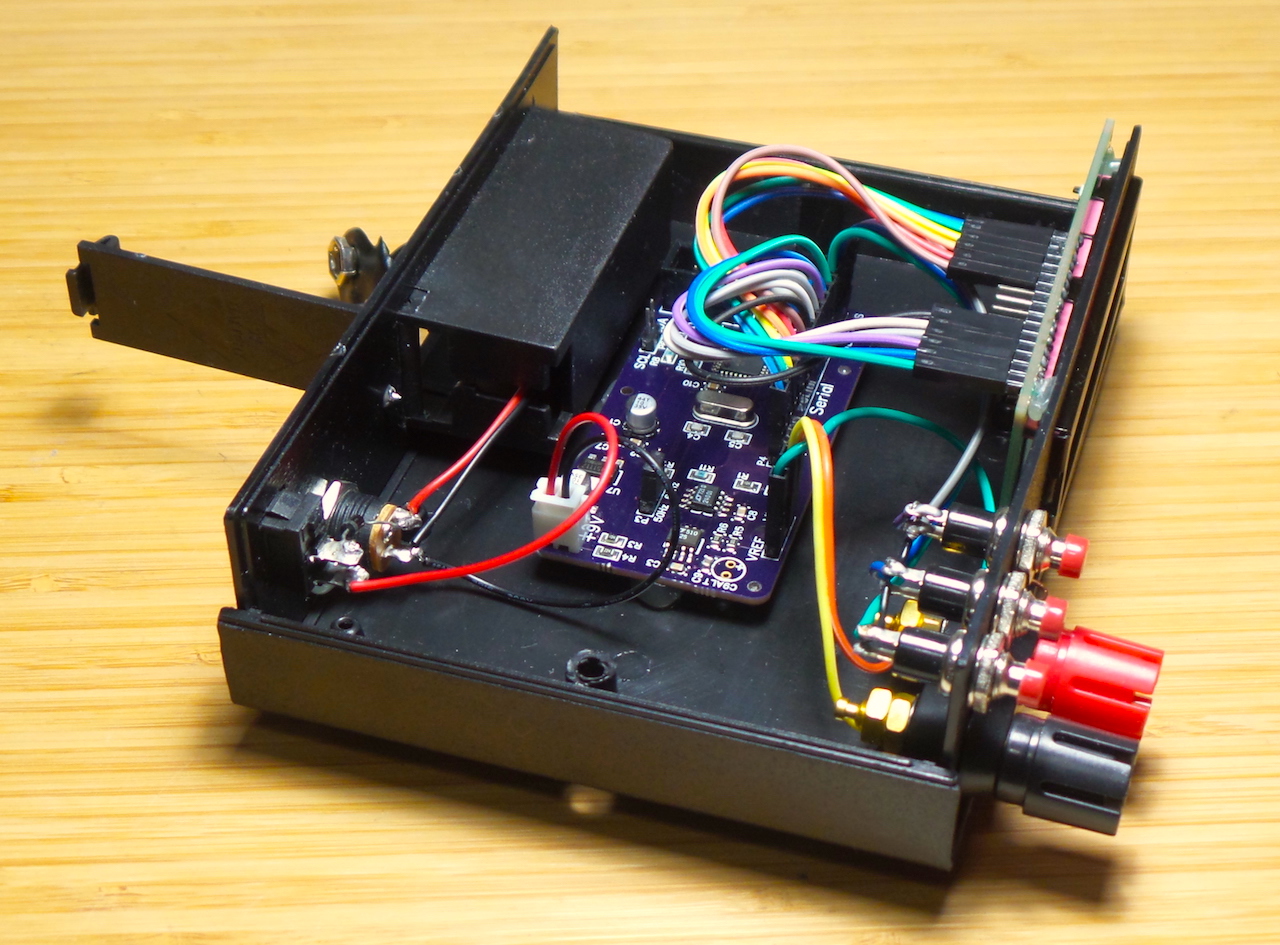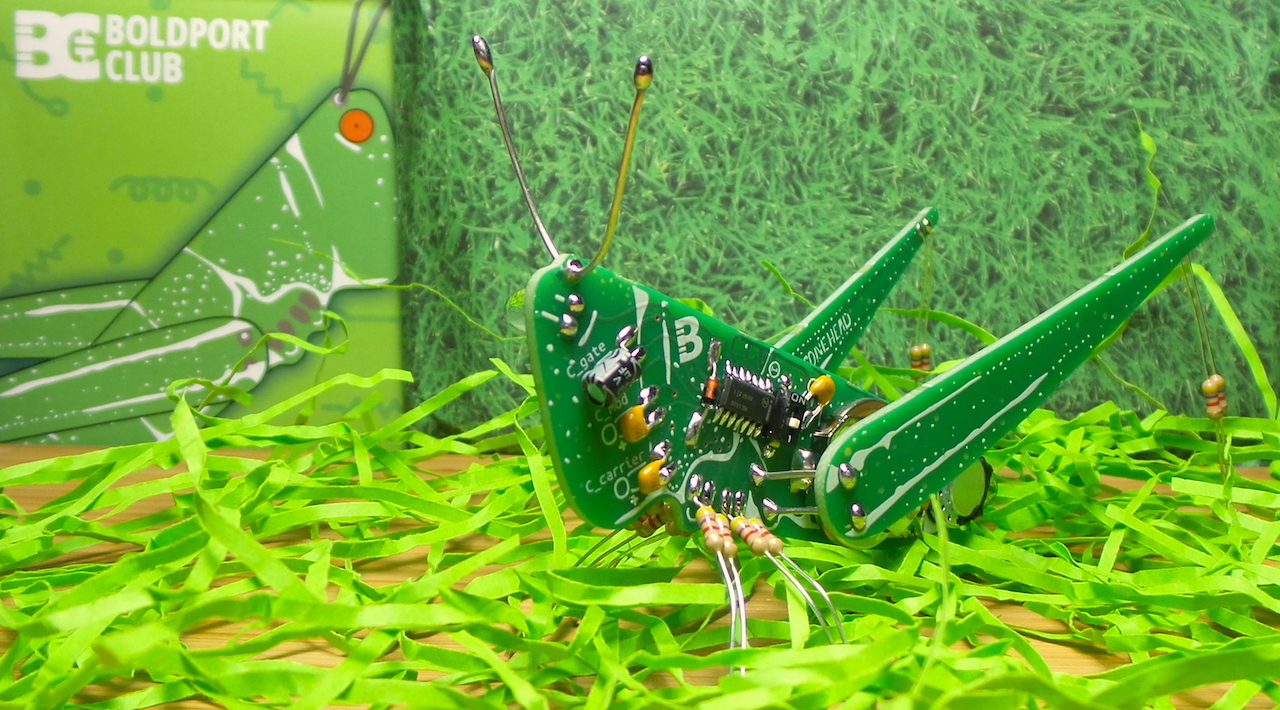LEAP#409 Boldport Bugs: The Conehead
Conocephalus is a genus of bush-crickets, known as coneheads. Now I have one beautifully rendered in a 3D kit from Boldport. It even has a pretty convincing FM-synthesised chirp that varies in response to lighting conditions.
Boldport projects never fail to inspire some new learning. In the case it introduced me to Pure Data - a nifty open source visual programming language for multimedia. I reproduced the Pure Data chirp model and added a few more controls to make it easier to play around with.
As always, all notes, schematics and code are in the Little Electronics & Arduino Projects repo on GitHub
read more and comment..
LEAP#407 AC-powered DPS3005 Bench Supply
The DPS3005 is one of a range of popular DC power supply modules; this one is designed for up to 32V/5A DC output. For this project, I am mounting the module in a project case, and adding a rectified step-down transformer so the unit is powered from mains AC.
As always, all notes, schematics and code are in the Little Electronics & Arduino Projects repo on GitHub

read more and comment..
LEAP#406 CH340G USB to Serial on a Breadboard
The CH340G is a USB to UART Interface chip. It is often used as a cheap alternative to more established brands. I have some CH340G chips, and with only a few extra components one can build a perfectly serviceable USB to TTL-level serial on a breadboard. I test it out by using it to program an ATmega328 on a breadboard over the serial link.
As always, all notes, schematics and code are in the Little Electronics & Arduino Projects repo on GitHub

read more and comment..
mV Meter Battery and Protection Mod
The ATmega328-based millivolt meter based on a design by Scullcom Hobby Electronics has been serving well on my bench. But time for a couple of mods:
- adding a 9V internal battery that can be used when not connected to external supply - great for when the bench is crowded
- simple reverse-polarity protection (inline rectifier), particularly to avoid any confusion over centre-negative/centre-positive power connectors
As always, all notes, schematics and code are in the Little Electronics & Arduino Projects repo on GitHub

read more and comment..
